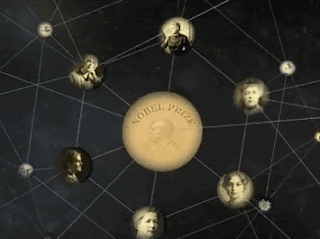Google has unveiled the Knowledge Graph, which they’re calling the
“first step in the next generation of search.” The initial release is
gradually rolling out to U.S. English users and consists of three
elements:
- Links to different sets of results based on contextual meanings for any given search term
- Topic summaries with key facts visible in the sidebar of the SERPs
- “Information boxes” that offer additional information in the SERPs sidebar based on popular related queries.
Segmented Results “Slices”
The first feature in Google’s new Knowledge Graph gives users the option to choose from sets of results based on various meanings or interpretations of a query. In the announcement, Google uses the query “taj mahal” as an example to illustrate how people may be searching for the same query but from a variety of contexts.
One user could be searching for blues musician Taj Mahal, while another is more interested in booking into the Trump Taj Mahal Casino Resort. Google displays a sidebar box entitled “See results about” with brief descriptions and links to different sets of results based on interpretations of the query.
It’s interesting to note that in the example provided (see image above), there are no ads visible on the page. The new “See results about” box appears below the Google Map, the new information box, and “People also search for” image listings of related destinations in the right sidebar.
As an aside, Google’s concept with this feature isn’t entirely new; smaller search engine DuckDuckGo has been toying with segmented results and suggestions based on contextual meaning for some time.
Topic Summaries Highlight Key Facts Without Leaving the Results Page
Doing research for a school project? You might find all of the information you need in the sidebar of the Google search engine results page, negating the need to even click through as far as a Wikipedia topic page.
The second new element of Knowledge Graph search compiles key facts on popular topics and displays them in a type of stats box at the top of the right sidebar. Again, there are no ads visible above the fold in the example Google used to demonstrate the new feature. Whether that will change as they continue to roll out and test the new layout is anyone’s guess, though my gut tells me the ad-free layout won’t last long.
“Serendipity Box” Suggests Information Based on Popular Queries
Remember when Mark Zuckerberg launched GraphRank, Timeline and the Ticker at F8 last year and I whinged about how often he used the words “serendipity” and “serendipitous” in his announcement? Google is catching a bad case of the serendipities lately and that overused, flighty word appears again in this latest announcement.
Google’s Engineering SVP Amit Singhal wrote in the launch post, “...some of the most serendipitous discoveries I’ve made using the Knowledge Graph are through the magical ‘People also search for’ feature.”
This feature, which I shall call the Serendipity Box from this day forward, suggests additional factoids and links (to books, for example) based on popular search queries around the topic.
Knowledge Graph = More Time on Google, Less Time Surfing the Web
The theme throughout new Knowledge Graph is this: the information Google believes you are searching for is available on the Google search results page or as close to it as possible. Google seems to have been testing these features for some time now, with user groups reporting testing as early as last November.Already, there are interesting conversations going on around how this might affect information sites like Wikipedia and whether this type of filter bubble is actually best for users or not.
Over at ZDNet, Google-watcher Christopher Dawson points out that these are the first new search features born of Google’s new privacy policy and the slew of AI data afforded them because of it. “Sound like Facebook’s ‘Social Graph’? That’s because it is, although as many of us Google watchers predicted, this is the first iteration of semantic search enabled by the sort of data sharing that Google outlined earlier this year in its new privacy policy,” he wrote.
At The Next Web, the subject of antitrust is brought up again, as Matthew Panzarino asks, “What happens when Google stops being the conduit and starts being a curator?” It’s a valid and timely question. How will websites react when not only metadata, but complete fact sets, are pulled from their pages and displayed on the Google results page, making click-throughs to the actual results redundant?
WebProNews spoke to Google about the potential for vandalism, as they seem to rely heavily on Wikipedia for key facts and data to support the new features. A Google spokesperson told them, “I can’t share a ton of detail here, but we’ve got quality controls in place to try to mitigate this kind of issue. We’ve also included a link so users can tell us when we may have an inaccuracy in our information.” These controls reportedly combine machine and human review elements.
ChaCha Director Jeff Jockisch points out in a Google+ conversation on Knowledge Graph that a large part of the data used to populate these new info summaries comes from Freebase, acquired by Google in 2010 when they purchased Metaweb. He does note, though, that Freebase itself gleaned a lot of its data from Wikipedia.

No comments:
Post a Comment